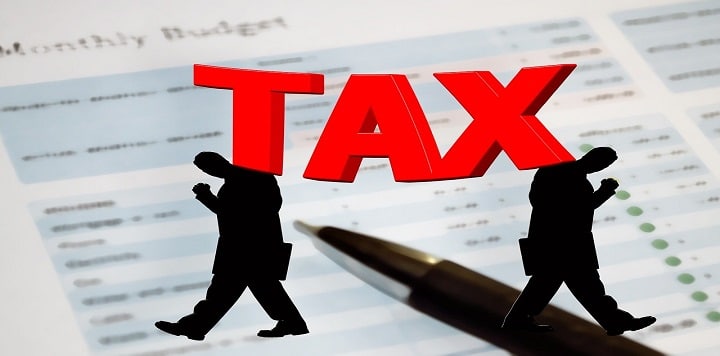Summary :- Starting Oct 1st 2023, there will be 20% TCS on foreign remittances (other than for education and medical purposes) over a threshold of INR 7 lakhs. Foreign remittances of less than Rs 7 lakh in a financial year are not subject to any Tax Collected at Source (TCS).Let’s understand TCS for foreign remittances in more detail.
The Union Budget proposed by Finance Minister Nirmala Sitharaman in February 2023 had some pretty big updates regarding TCS for foreign remittances. Tax Collected at Source (TCS) of 20 percent without any threshold limit was earlier proposed for all foreign remittances under the liberalized remittance scheme (LRS) other than those intended for education or medical purposes. However, an official notification from the Finance Ministry released later on June 28, 2023 clarifies that a threshold of Rs 7 lakhs for TCS shall be restored on foreign remittances. Let’s analyze all aspects of TCS on foreign remittance in detail, but first let’s understand what LRS and TCS are!
What is Liberalised Remittance Scheme (LRS)?
A Liberalized Remittance Scheme (LRS) of the Reserve Bank of India (RBI) allows Indians to remit money for investment, expenditure, and other permissible reasons to another country during a Financial Year. A resident Indian individual can remit up to $250,000 or equivalent in a financial year, according to the prevailing regulations.
What is Tax Collected at Source (TCS)?
Tax Collected at Source, or TCS, is a type of advance tax collected by sellers from buyers. In the case of foreign remittance transactions, you may be required to pay this type of tax when sending money abroad. It is important to emphasize that remitting money does not necessarily mean sending it to friends or family abroad. It could even mean remittances made for shopping, investing abroad, or buying assets.
Analyzing the Change in TCS on Foreign Remittance
All foreign remittance transactions that fall under the LRS are subject to Tax Collected at Source (TCS). By amending Section 206C of the Income Tax Act 1961, the Finance Bill has introduced new TCS charges on foreign remittances. TCS has been raised from 5% to 20% on foreign remittances over a threshold limit of Rs 7 lakhs in a financial year, except for remittances for education and medical treatment, starting October 1st 2023. Currently, TCS on foreign remittances under the Liberalised Remittance Scheme is 5% for remittances exceeding Rs 7 lacs in a financial year.
The following table shows the present TCS rate and the proposed TCS rate:
| Type of Transaction | Current Rate | Rate Effective Oct 1, 2023 |
|---|---|---|
| Outward Remittances (except for education, medical and business purposes) | 5% (only for forex spends over Rs. 7 lakhs in the financial year) | 20% (only for forex spends over Rs. 7 lakhs in the financial year) |
| Outward remittances for education/medical purposes | 5% (only for forex spends over Rs. 7 lakhs in the financial year) | No change |
| Outward remittances for education (with education loan) | 5% (only for forex spends over Rs. 7 lakhs in the financial year) | No change |
| Outward remittances for business/commercial purposes | 0% | 0% |
1. Foreign remittance for the purpose of education & medical treatment
Despite being subject to Tax Collected at Source (TCS), education and medical remittances are not included in the new increments proposed in the TCS regime, starting October 1, 2023. This means TCS for these two purposes will follow the old TCS rates. It is great news for parents whose children study abroad and for individuals seeking medical treatment abroad.
A 5% TCS will be charged for remittances for medical treatment and education abroad. Let’s say someone wants to remit Rs. 9,00,000 abroad for education purposes. There will be a TCS of 5% on amounts over Rs. 7 lakhs. So, the amount of TCS, in this case, will be {(9,00,000-7,00,000)*5/100}=Rs 10000.
2. Foreign remittance when funds are obtained from a loan for overseas education
In the case of overseas education when the funds are obtained through a loan from any financial institution, the TCS will continue to be 0.5%. Let us try to understand this through an example. Suppose that someone has taken an education loan of Rs. 10,00,000 from a financial institution and wants to remit these funds for education fees. In this case, the person will be charged 0.5% of the amount over Rs. 7 lakhs. The amount of TCS to be paid is {(10,00,000-7,00,000)*0.5/100}= Rs 1500.
3. Foreign remittance for overseas tour packages
Sending money isn’t just about sending it to family or friends abroad. It could even refer to money remitted for overseas tour packages. From October 1, 2023, you must pay 20% tax collected at source (TCS) if you buy a foreign tour package worth more than 7 lakhs in a financial year through a travel agent. Let’s assume that if someone remitted Rs. 10,00,000 to buy an overseas tour package, he will be liable to pay 20% TCS on Rs (10,00,000- 7,00,000) = Rs 3,00,000. The amount of TCS to be paid is {(3,00,000)*20/100}= Rs 60,000
4. Foreign remittance for any other purpose
Outward remittances made for any other purpose, like shopping, investing overseas, or buying assets, will also be subject to the new TCS rate from Oct 1, 2023. As an example, if you wish to remit Rs 11,00,000 to the US for purposes of investing in US stocks, you are liable to pay 20% Tax Collected at Source (TCS) on an amount exceeding Rs 7 lakhs. The amount of TCS to be paid is {(4,00,000)*20/100}= Rs 80,000.
Should You Worry About the Change in TCS on Foreign Remittances?
The increase in TCS is likely to increase the upfront costs associated with foreign remittances on amounts exceeding Rs 7 lakhs, however, this shouldn’t be a cause for concern. The reason for this is quite simple. TCS isn’t an additional tax. TCS can either be adjusted against your total income tax liability or claimed back when filing income tax returns. You can receive your TCS amount without any hassle, so there is no need to worry. Moreover, if you want to avoid 20% TCS altogether on foreign remittances worth more than 7 lakhs, you still have time until 1st Oct, 2023 to do so.
What Can Be Done to Minimize Foreign Remittance Costs Under the New TCS Regime?
As part of the Liberalised Remittance Scheme (LRS), the government has increased tax collected at source (TCS) for foreign remittances from 5% to 20% (except for education & medical purposes) over a threshold limit of Rs 7 lakhs, starting Oct 1, 2023. So, when you send more than 7 lakhs to family or friends living abroad, you will have to pay 20% tax collected at the source (TCS). While this new TCS rate will take effect on October 1st 2023, there are still ways to minimize your overall remittance costs.
1. Send money abroad before October 1st if you want to remit more than 7 lakhs
For those who plan to send someone more than 7 lakhs abroad in a financial year, it is a good idea to book their remittance orders in advance i.e. before Oct 1, 2023, in order to avoid paying a TCS of up to 20%. With BookMyForex, you will find amazing deals on international money transfers. Live and transparent rates are displayed 24*7 on our website. It only takes a few minutes to place a remittance order online from the comfort of your home. The best part is that you pay zero transfer charges when you send money abroad via BookMyForex.
2. If you send money abroad after 1st Oct’23, claim your TCS money back
If you intend to send money abroad after Cct 1, 2023, you may be required to pay TCS at the new rate on any amount exceeding Rs lakhs, but there is still no need to worry. The new TCS rate is not something to concern yourself with, since the amount deducted as TCS can be adjusted against your overall tax liability. This TCS can be claimed as a refund or credit when filing your income tax return or adjusted in your advance tax payments. Customers will receive a TCS certificate that they can use to claim TCS when they file their income tax returns. In the case of salaried employees, you can share the TCS certificate or acknowledgment receipt with your employer who may adjust TCS against the TDS payable.
How to Get Your TCS Money Back?
If you have sent more than 7 lakhs abroad in a financial year and are subject to TCS, you should understand the financial implications and know how to claim your TCS. The amount of TCS you have paid over your actual tax liability can be claimed as a refund in your income tax return. Follow these steps to claim your TCS back:
- Make sure that you have all the necessary documents with you, including the TCS certificate, the acknowledgment receipt, and Form 26AS, if applicable.
- The refund claim form needs to be filled out. All necessary documents must be attached to the refund claim form.
- Submit both the refund claim form and the supporting documents to the Income Tax Department.
- The Income Tax Department will process the refund claim and credit the money to the individual’s bank account.
How BookMyForex can help Adjust your TCS for Foreign Remittance?
BookMyForex strives to provide exceptional support to our customers, especially when it comes to Tax Collected at Source (TCS). Here’s how we can help you adjust your TCS:
1. TCS acknowledgment receipt
BookMyForex will provide the customers with a TCS acknowledgment receipt. If you are a salaried employee, you can share the receipt with your employers who may adjust TCS against the TDS payable.
2. Make use of a TCS calculator
BookMyForex will launch an online TCS calculator so you can check and analyze what they pay as TCS.
3. Access our helpdesk for any queries
Moreover, we will set up a helpdesk to assist our customers with any TCS-related questions!
4. Get an automated TCS certificate
Finally, the TCS certificate will automatically be sent to the customer’s registered email ID. Taxpayers can use this certificate for TCS refund on foreign remittances when filing their income tax returns.
Note: Individuals should be aware that TCS charges for foreign remittance are not a burden, but rather a tax mechanism that ultimately benefits them.
Frequently Asked Questions (FAQs)
Q1. Is there any change in the tax implication on remittances for the purpose of overseas education?
A: For remittances done for the purpose of overseas education, 5% TCS will be applicable on the amount being remitted in excess of INR 7 Lacs. The same would 0.5% in the cases of the amount remitted originates via an education loan from a financial institution as defined under Section 80E of the Income Tax Act.
Q2. What is the TCS taxation rate and which transactions will be affected?
A: All forex purchases and remittances (other than for education, medical and business/ commercial purposes) over a threshold limit of Rs 7 lakhs in a financial year executed under the LRS will be liable to be deducted @20%, starting Oct 1, 2023. The TCS for education and medical treatment is still the same as the current i.e. 5% or 0.5% where the source of funds for the remittance is an education loan from an authorized financial institution). No TCS is applicable to business/ commercial transactions.





























Leave a Reply